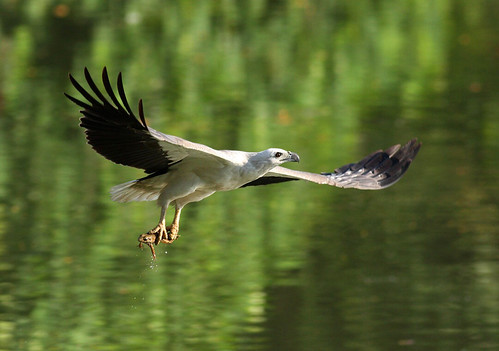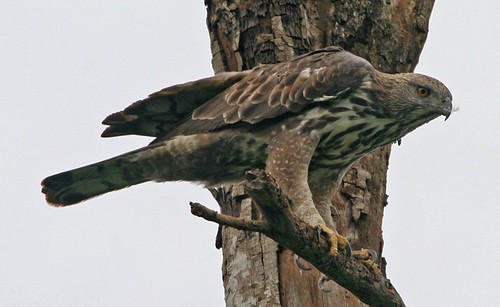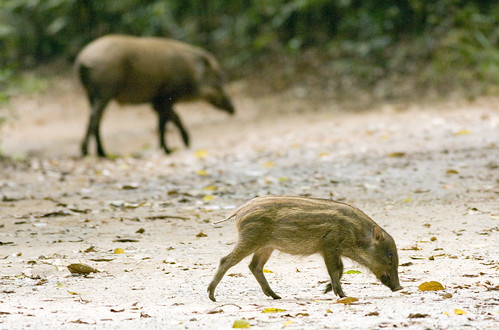
"He's dead, that's what's wrong with it!" "No, no, he's uh... he's resting."
Wild boar resting beneath diesel tank, Tampines;
(Photo from Channel 8 news Facebook page)
As a longtime resident of Tampines, I pay very close attention to sightings of wildlife in this part of Singapore. True, we may not be very close to the forests of the Central Nature Reserves, and most of our parks are little manicured gardens nestled amongst the HDB blocks, but we do have much larger patches of vegetation. While these areas are little more than wasteland composed of a mixture of fire-tolerant woodland, scrub and grassland (wildfires are not uncommon occurrences during the drier months), they provide habitats for many species. One such pocket of greenery was recently converted into the Tampines Eco Green.
Still, the thought of a wild boar (Sus scrofa) living here was a big surprise for me.
It appears that a television news crew was investigating reports of a wild boar that was apparently lurking in the area, only for the chase to end in the discovery of an illegal fuel station. In fact, the wild boar in question was found resting beneath a diesel tank.
Here's a couple of news reports discussing the find. A darn shame that the wild boar appeared right at the start, and then became completely irrelevant as the focus of the story shifted to the illegal fuel station.
Based on what my friends tell me, I'm led to believe that the relevant segment from Mandarin-language Channel 8 news (which I still cannot track down) was a lot more interesting and amusing from a human perspective (considering that the people manning the fuel station were very uncomfortable at being filmed), and the wild boar received quite a bit more airtime.
Where did it come from?
It's unfortunate that the wild boar got sidelined, because I'm personally way more interested in how a wild boar might have ended up in Tampines. Although populations of wild boar have become established in the Western and Central Catchment Areas, records from the eastern side of mainland Singapore are sparse. There are some sightings of individuals from Changi and Seletar East Camp, as well as another recent sighting of an individual at the Lorong Halus Wetland.

Wild boar at Lorong Halus Wetland;
(Photo by NatureInYourBackyard)
Tampines Avenue 10 is somewhat close to the Lorong Halus Wetland, and I'm wondering if these sightings actually involve the same individual. It also helps that the Lorong Halus wild boar also seemed to be quite tame and unafraid of people. I haven't been able to find out if it's still hanging around that area though, and there aren't enough photos to gauge if the Lorong Halus boar looks similar enough to the Tampines wild boar.
Even if it turns out that 2 separate individuals are involved, one at Lorong Halus and one at Tampines, that leaves the question as to where the Tampines wild boar came from. Like the one at Lorong Halus, I would think that it's most likely to have swam over from Pulau Ubin. We all know that Pulau Ubin is currently a stronghold for this species, and not many people are aware that pigs are excellent swimmers.
There's a population of feral pigs in the Bahamas that have a habit of swimming out to sea to greet people in boats and beg for food.
Still, if the Tampines wild boar swam over from Pulau Ubin, I wonder why it wandered so far inland, instead of making itself at home along the coast at Pasir Ris. And I'm also wondering if anyone has ever encountered wild boar in Pasir Ris, but thought he was hallucinating or that no one would believe him; imagine a wild boar passing through a Pasir Ris neighbourhood in the wee hours of the morning as it searches for a suitable home.
It's unknown if the illegal fuel station has been around for a long time, but I guess the wild boar was eventually attracted by the prospect of scavenging leftovers, or people started deliberately feeding it. Over the years, the result is a habituated wild boar, completely used to the presence of people, and tame enough to take an afternoon nap beneath a fuel tank. In many ways, it's an echo of how wild boar were first tamed and then domesticated thousands of years ago, giving rise to the many breeds of domestic pigs we see today.
Of course, another possible scenario is that someone smuggled in a pet boar and allowed it to run loose. We may never know for sure.
Rescued from an eagle?
An interesting bit of trivia popped up on the Channel 8 news Facebook page:
山猪小趣闻:在淡滨尼发现的山猪,小时候差点被老鹰叼走,幸好有人及时按车喇叭,结果吓到老鹰便把手一松,小山猪才保住了命。听说当时的小山猪只有4、5公斤,现在已有80公斤,老鹰不再可怕!Here's a loose translation: When the Tampines wild boar was much younger, it was nearly carried off by an eagle. Fortunately, someone witnessed it and pressed his car horn just in time, scaring the eagle and causing it to let go, and saving the boar's life. At that time, the wild boar probably weighed just 4 or 5 kilograms. Now it weighs around 80 kilograms, and so doesn't have to be afraid of eagles anymore.
It certainly is a very interesting snippet of information; the diet of many Southeast Asian raptors is not very well-studied, and definitive records of local birds of prey taking such large prey are probably rare, if not nonexistent.
It would take a large raptor to target a piglet of that size; both golden eagles (Aquila chrysaetos) in North America and wedge-tailed eagles (Aquila audax) in Australia will target piglets, whether it's feral or domestic hogs. The bald eagle (Haliaeetus leucocephalus) and Papuan eagle (Harpyopsis novaeguineae) are also known to prey on piglets. The ability of eagles to kill and carry off large prey should never be underestimated; in many cases, even if prey is too large for the bird of prey to fly off with it, it may simply be consumed on the spot, or torn into smaller, more manageable pieces.

Martial eagle (Polemaetus bellicosus) with warthog piglet (Phacochoerus africanus), Kenya;
(Photo by ThomasChamberlin)
In Singapore, the most likely candidate would be the white-bellied sea eagle (Haliaeetus leucogaster), our largest bird of prey, although I'm not sure if this species is known to go after such large mammalian prey.

White-bellied sea eagle with frog, Bukit Panjang;
(Photo by kampang)
Another local raptor, the changeable hawk-eagle (Nisaetus cirrhatus), might not be large or powerful enough to fly off with a piglet in its talons, but might still be capable of killing one; there is a record from Japan of a female mountain hawk-eagle (Nisaetus nipalensis) bringing a wild piglet back to its nest.

Changeable hawk-eagle, Sime Forest;
(Photo by Lip Kee)

Best not to wander too far from Mom, you never know what might fall from the sky...
Sow and piglet, Chek Jawa;
(Photo by Marcus)
Fate of the Tampines wild boar?
One final question that came to mind is with regards to the fate of this tame boar. I suppose that even if the authorities don't conduct a raid and shut down this illegal fuel station soon enough, the people behind this may decide to pack up and seek other secluded areas to resume business, and leave the wild boar behind.
While I'm sure it would still be capable of finding food in the surrounding woodland and scrub, my guess is that in such a scenario, it might be driven to seek out other people, and venture closer to the nearby residential areas. This presents the risk of it coming into conflict with other people, whether it's by scavenging for trash, harassing people into giving it food, or crossing the road and getting involved in a traffic accident. I'm not sure if people would be comfortable with having a wild boar that's so fearless and brazen around humans, even if it means no harm at all; after all, the news crew were apparently informed about the wild boar in the first place through a caller who complained about it.
Another possibility is that poachers, now that they have discovered the whereabouts of this wild boar, may take advantage of its trust of people for nefarious purposes. Why set traps in the forest when you have a wild boar that would probably walk right up to you and ask to be fed?
I fear that the authorities may decide to take the easy way out and have this wild boar euthanised, which in my honest opinion, would be a real shame. Yes, feeding wildlife is usually not a good idea, and an animal as large as a wild boar definitely poses some risk to human safety, but I think this boar may be tame enough to be brought into captivity and kept somewhere, much like how one of the residents of Pulau Ubin had a pet wild boar named Jack. It would be excellent if the Tampines wild boar could be relocated somewhere far from people, where it can find its own food and has less chance of becoming a nuisance. Maybe it could be allowed to roam freely in one of the larger parks or nature areas, and play a role as an ambassador for its species or its threatened habitats, much like how Priscilla was a mascot for Chek Jawa.

Priscilla accompanying visitors to the shore, Chek Jawa;
(Photo by Ria)
Even though this individual seems to be the only wild boar living in Tampines at the moment, I won't be surprised if sooner or later, we have more reports of wild boar living in these patches of vegetation. I don't think people are really quite ready to have wild boar in our midst, but it seems like an undeniable fact that the wild boar are truly making a comeback. Whether we are able to coexist with them will depend greatly on our ability to reduce the likelihood of conflict, not just by managing their numbers, but also by managing how we behave towards wildlife in general.